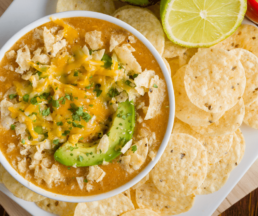Sorting Out Coronavirus Fact From Fiction
Even before the COVID-19 pandemic, people were fighting misinformation about health conditions, vaccines and treatments online. With the pandemic constantly evolving, it may be hard to keep up and understand what’s factual and what is fake—especially if your primary source for news is social media.
It’s important to be up to date on COVID-19 guidance to understand your local regulations. Misinformation continues to spread about topics like at-home treatments, how you get infected, and what’s safe or unsafe once you go out in public.
As the number of COVID-19 infections rises across the globe, it’s important now more than ever to understand the facts and correct guidelines for protecting yourself.

Fighting the Infodemic
Public health officials say they are not only fighting a pandemic, but also an “infodemic.” Defined as an overabundance of information—both accurate and not— the infodemic makes it hard for people to find reliable guidance online or on social media.
Consider asking yourself the following questions to sort out coronavirus fact from fiction:
- Who’s saying it? Check out not just who sent you the article or graphic, but also the author and whether it’s posted by a well-known publication. When it comes to health care, peer-reviewed journals add another level of credibility to research.
- What proof do they have? Consider the information more credible if there are additional links or evidence in the article.
- When was this published? It’s easy to share outdated information, especially on social media. Check the date, as the pandemic continues to quickly evolve day by day.
- Where else is it being reported? Do a quick online search to see if trusted organizations (like the Centers for Disease Control and Prevention, the World Health Organization or local public health officials) are also reporting it.
- Why are they saying it? Try to understand the study’s funding, which may impact its credibility. Certain organizations may have a motive or bias.
If you’re still aren’t sure, ask yourself whether you do believe the information. Trust your gut and rely on solid sources.

Nutritional Information (per serving)
| Total Calories | 430 |
| Total Fat | 15 g |
| Protein | 12 g |
| Carbohydrates | 65 g |
| Dietary Fiber | 14 g |
| Saturated Fat | 3 g |
| Total Sugars | 18 g |
Source: USDA
Mango Berry Rotini Salad
Ingredients
- 1 cup whole-wheat rotini pasta, uncooked
- 1 ripe Mango
- 1 cup raspberries
- 1 cup blueberries
- 2 cups fresh baby spinach
- ½ cup reduced-fat feta cheese
For the vinaigrette:
- 3 Tbsp. extra virgin olive oil
- 2 Tbsp. raspberry vinegar
- 1 tsp. sugar
- 1 tsp. poppy seeds
- ¼ tsp. salt
Preparations
- In a small bowl, whisk vinaigrette ingredients. Set aside.
- Boil water and cook rotini according to package instructions. Drain cooked rotini and rinse in cool water.
- While rotini is cooking, cut mango into chunks, removing peel and pit.
- Place salad ingredients in a large bowl. Drizzle with vinaigrette and toss gently.
This article is intended for informational purposes only and is not intended to be exhaustive, nor should any discussion or opinions be construed as professional advice. Readers should contact a health professional for appropriate advice.

